It’s a concept most of us learn in elementary school science class: arteries carry bright red, oxygen-rich blood away from the heart, and veins carry dark, oxygen-poor blood back to it. This simple rule forms the basis of our understanding of the circulatory system. But like many rules in biology, there are crucial, life-sustaining exceptions. This leads to the surprisingly complex question: do veins carry oxygenated blood? The answer is more fascinating than you might think, revealing the elegant and intricate design of the human body.
This guide is dedicated to providing a clear, comprehensive, and definitive answer to that question. We will journey through the chambers of the heart, follow the pathways of blood vessels, and explore the two critical instances where our basic understanding is turned on its head. This is not just a simple yes or no question. Understanding the nuances of when and why do veins carry oxygenated blood is key to appreciating the miraculous system that keeps us alive every second of every day.
The General Rule: Understanding the Role of Veins
Before we can explore the exceptions, we must first solidify our understanding of the general rule. In the vast majority of your circulatory system, known as the systemic circuit, veins have one primary job: to act as the return highway for deoxygenated blood.
Think of your body’s cells like tiny, bustling cities. They need a constant supply of fuel and oxygen to function, and they produce waste products, primarily carbon dioxide. Arteries act as the delivery trucks, bringing fresh, oxygenated blood from the heart to every single cell. After the cells have used the oxygen, the blood, now depleted of oxygen and carrying carbon dioxide, needs a way to get back to the heart and lungs to be refreshed. This is the job of the veins.
This deoxygenated blood is dark red in color, which is why veins often appear bluish when seen through the skin (a trick of light we will explore later). So, based on the function of the systemic circuit, which makes up most of our circulatory network, the answer to the question do veins carry oxygenated blood would be a firm no. They are the cleanup crew, the return route, the vessels responsible for bringing used blood back for re-processing.
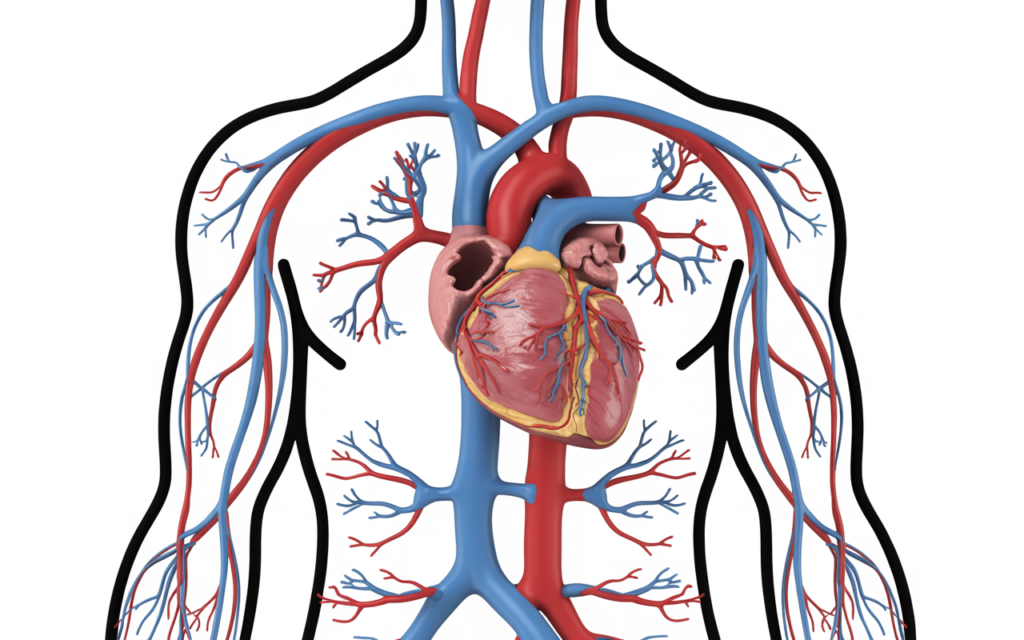
The Big Exception: When Do Veins Carry Oxygenated Blood?
Here is where biology gets truly interesting. The simple rule we all learned has two famous and vital exceptions. These are the specific, unique cases where the answer to do veins carry oxygenated blood becomes a resounding “yes.” These exceptions are not minor details; they are fundamental to the process of respiration and development.
The Pulmonary Veins: A Direct Line from the Lungs
The most significant exception to the rule is found in the pulmonary circuit—the part of the circulatory system that connects the heart and the lungs. Its entire purpose is gas exchange: dropping off carbon dioxide and picking up fresh oxygen.
Here’s how it works:
- Deoxygenated blood returns from the body to the right side of the heart.
- The right side of the heart pumps this deoxygenated blood away from the heart and into the lungs through the pulmonary arteries. (Notice here that an artery is carrying deoxygenated blood, another exception to the simple rule).
- Inside the lungs, the blood releases its carbon dioxide and absorbs a fresh supply of oxygen. It is now fully oxygenated.
- This newly oxygenated, bright red blood must now return to the heart so it can be pumped out to the rest of the body. The vessels that carry this blood from the lungs back to the heart are the pulmonary veins.
This is the most critical example of when do veins carry oxygenated blood. The four pulmonary veins (two from each lung) deliver the most oxygen-rich blood in the entire body to the left atrium of the heart. Without this crucial function, the rest of your body would never receive the oxygen it needs to survive. Therefore, if anyone asks do veins carry oxygenated blood, the pulmonary veins are the prime example to cite. The very existence of the pulmonary circuit provides a definitive “yes” to the question, do veins carry oxygenated blood.
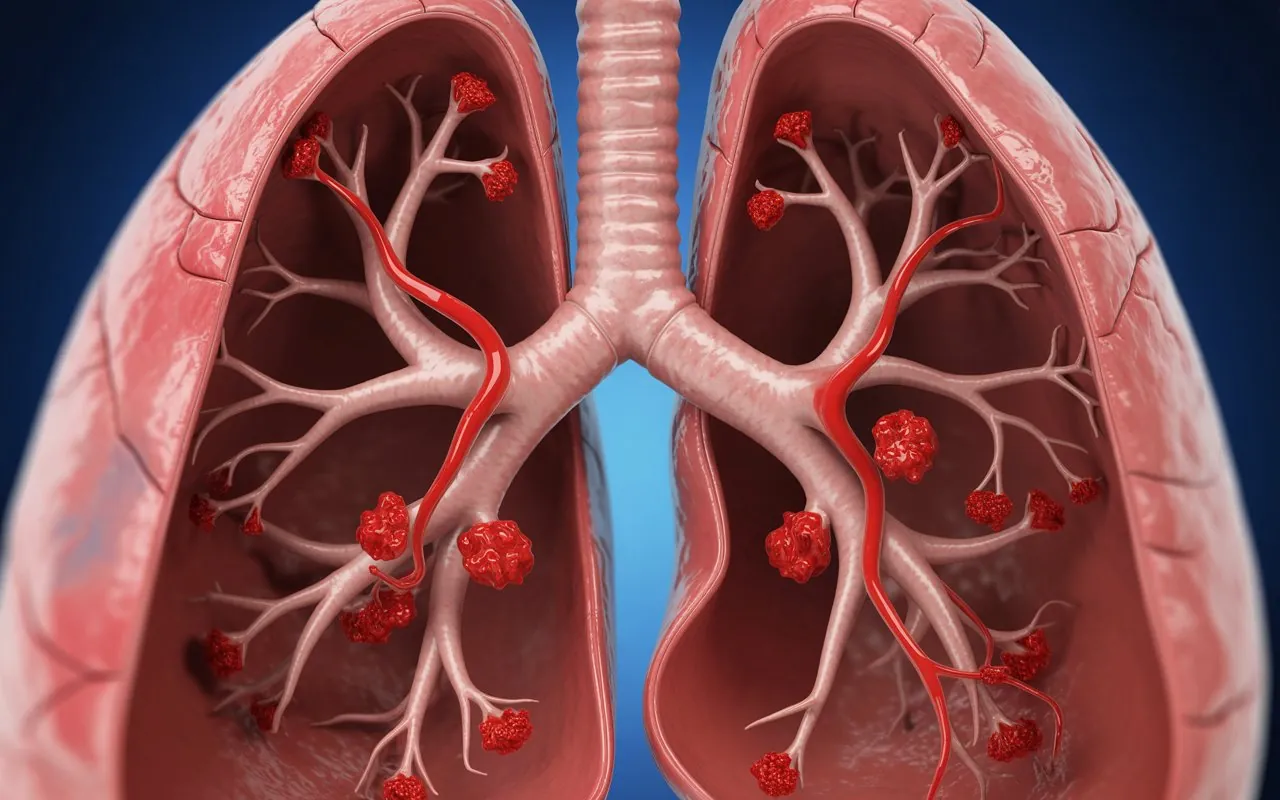
The Umbilical Vein: A Lifeline During Development
The second major exception occurs before we are even born, during fetal development. A growing fetus cannot breathe on its own; it relies entirely on the mother for its supply of oxygen and nutrients. This exchange happens through the placenta and the umbilical cord.
The umbilical cord contains three blood vessels: two umbilical arteries and one umbilical vein. Their roles are the reverse of what we see in the adult systemic circuit.
- The umbilical arteries carry deoxygenated blood and waste products away from the fetus to the placenta.
- The umbilical vein carries nutrient-rich and, most importantly, highly oxygenated blood from the placenta to the fetus.
This makes the umbilical vein another clear case where the answer to do veins carry oxygenated blood is yes. It acts as the primary lifeline, delivering everything the developing baby needs to grow. After birth, when a baby takes its first breath, this entire system changes, and these vessels close off, but their role during gestation is a perfect illustration of this biological exception. For a complete understanding of do veins carry oxygenated blood, this fetal circulation is an essential piece of the puzzle.
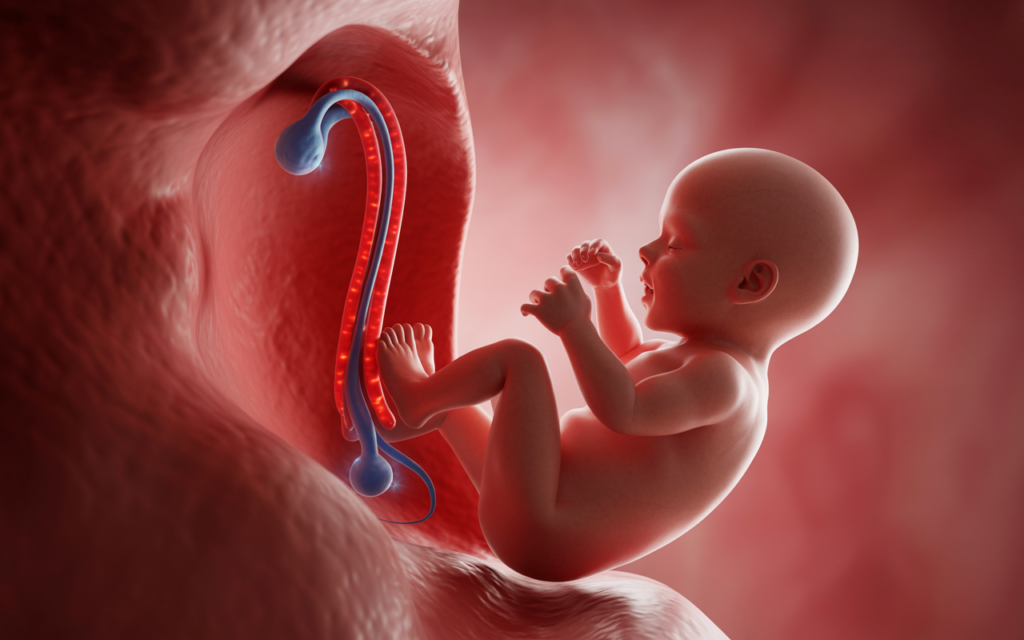
A Tale of Two Circuits: Systemic vs. Pulmonary
To truly cement your understanding of why the answer to do veins carry oxygenated blood can be both yes and no, it’s helpful to visualize the circulatory system as two distinct, interconnected loops.
The Systemic Circuit
- Purpose: To deliver oxygenated blood to the body’s tissues and return deoxygenated blood to the heart.
- Path: Left side of the heart -> Arteries -> Body Tissues -> Veins -> Right side of the heart.
- In this circuit: Arteries carry oxygenated blood; veins carry deoxygenated blood. For this loop, the answer to do veins carry oxygenated blood is no.
The Pulmonary Circuit
- Purpose: To take deoxygenated blood to the lungs to get oxygen and return oxygenated blood to the heart.
- Path: Right side of the heart -> Pulmonary Arteries -> Lungs -> Pulmonary Veins -> Left side of the heart.
- In this circuit: Pulmonary arteries carry deoxygenated blood; pulmonary veins carry oxygenated blood. For this loop, the answer to do veins carry oxygenated blood is yes.
Thinking of it as two separate systems that work in tandem makes it much easier to remember the exceptions to the general rule. The definition of an artery is a vessel that carries blood away from the heart, and a vein is a vessel that carries blood to the heart. The oxygen content is secondary to this directional definition. This is the ultimate reason do veins carry oxygenated blood in the case of the pulmonary veins.
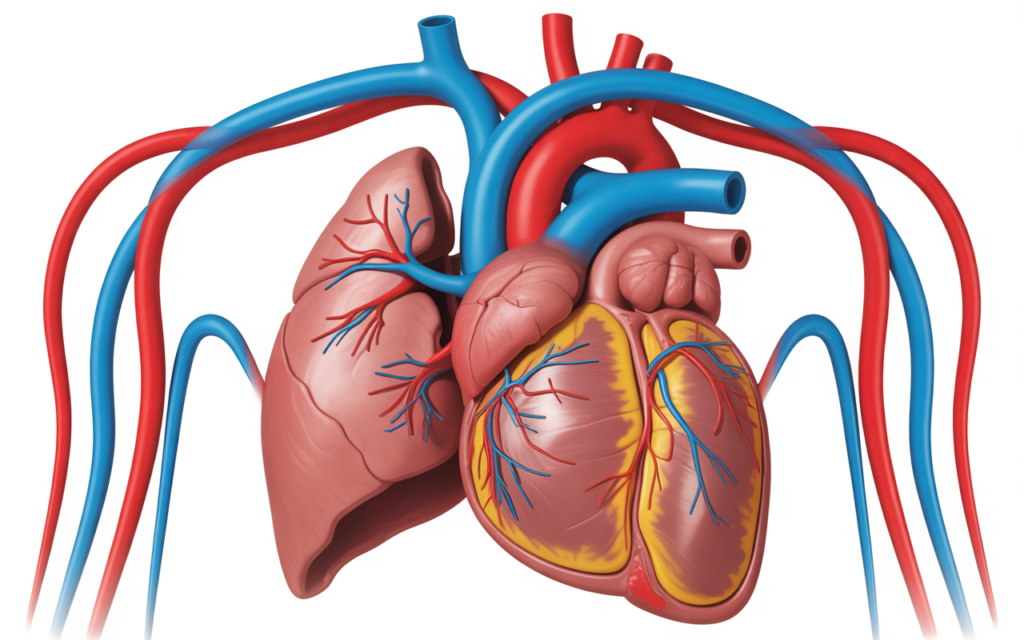
The Myth of Blue Blood: Why Do Veins Look Blue?
One of the reasons the concept of do veins carry oxygenated blood can be confusing is because of how our bodies look. We see blueish lines under our skin and naturally associate that color with the deoxygenated blood they are carrying. But blood is never actually blue.
- The Color of Blood: Oxygenated blood is bright, scarlet red. Deoxygenated blood is a very dark, maroon red. It is not blue.
- A Trick of Light: The blue appearance of your veins is an optical illusion created by your skin. Skin tissue is a filter for light. It absorbs red light frequencies and allows blue light frequencies to penetrate deeper and then reflect back to your eyes. Because veins are closer to the surface than arteries, we see them through this “blue light filter” of our skin.
- The Deeper Truth: The dark red color of the deoxygenated blood inside the vein absorbs more of the red light, making the reflection of blue light even more prominent. So, while their appearance might make you think the answer to do veins carry oxygenated blood is always no, it’s just a trick of physics and perception.
Understanding this helps to disconnect the visual appearance from the biological function. The color we see is not a direct representation of the oxygen content inside. This is an important clarification when discussing if do veins carry oxygenated blood.
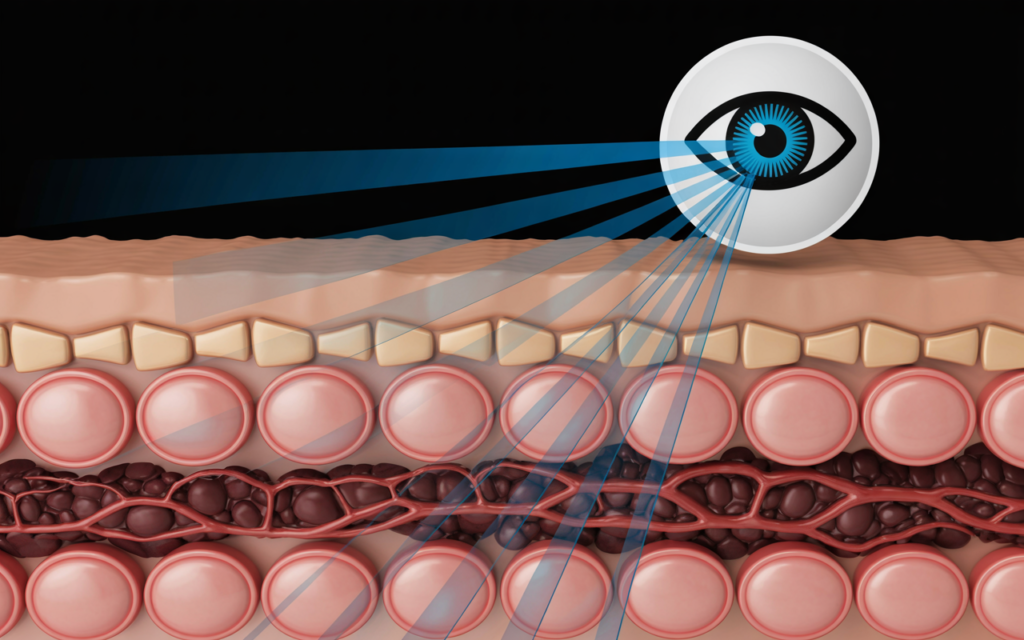
A Deeper Dive: The Journey of a Red Blood Cell
To bring all these concepts together, let’s follow the journey of a single red blood cell, starting from the moment it enters the heart, fully deoxygenated.
- Entering the Heart: Our deoxygenated red blood cell, returning from a trip to the legs, enters the right atrium of the heart through a large vein called the vena cava. At this stage, the answer to do veins carry oxygenated blood is no.
- To the Lungs: The cell is pumped from the right atrium to the right ventricle, and then shot out through the pulmonary artery towards the lungs.
- Gas Exchange: In the tiny capillaries of the lungs, our cell drops off its carbon dioxide molecule and a fresh oxygen molecule binds to its hemoglobin. It is now fully oxygenated.
- The Critical Return: Our cell now travels back to the heart. This is the moment when the answer to do veins carry oxygenated blood becomes yes. It travels through the pulmonary vein to enter the left atrium.
- To the Body: From the left atrium, the cell is pumped into the powerful left ventricle. With a mighty contraction, the left ventricle pumps the now oxygenated red blood cell into the aorta, the body’s largest artery.
- Delivering Oxygen: The cell travels through the network of arteries and arterioles until it reaches a capillary bed somewhere in the body, perhaps in the brain or a muscle. Here, it releases its oxygen to the waiting tissue.
- The Journey Back: Now deoxygenated once more, our cell begins its long journey back to the heart through the network of venules and veins, eventually returning to the right atrium to start the cycle all over again.
This cyclical journey perfectly illustrates the dual nature of our circulatory system and provides a complete context for understanding the nuances of the question, do veins carry oxygenated blood. It shows that the function of a vessel is defined by its destination, not just its contents, which is why do veins carry oxygenated blood in certain specific and vital parts of the system.
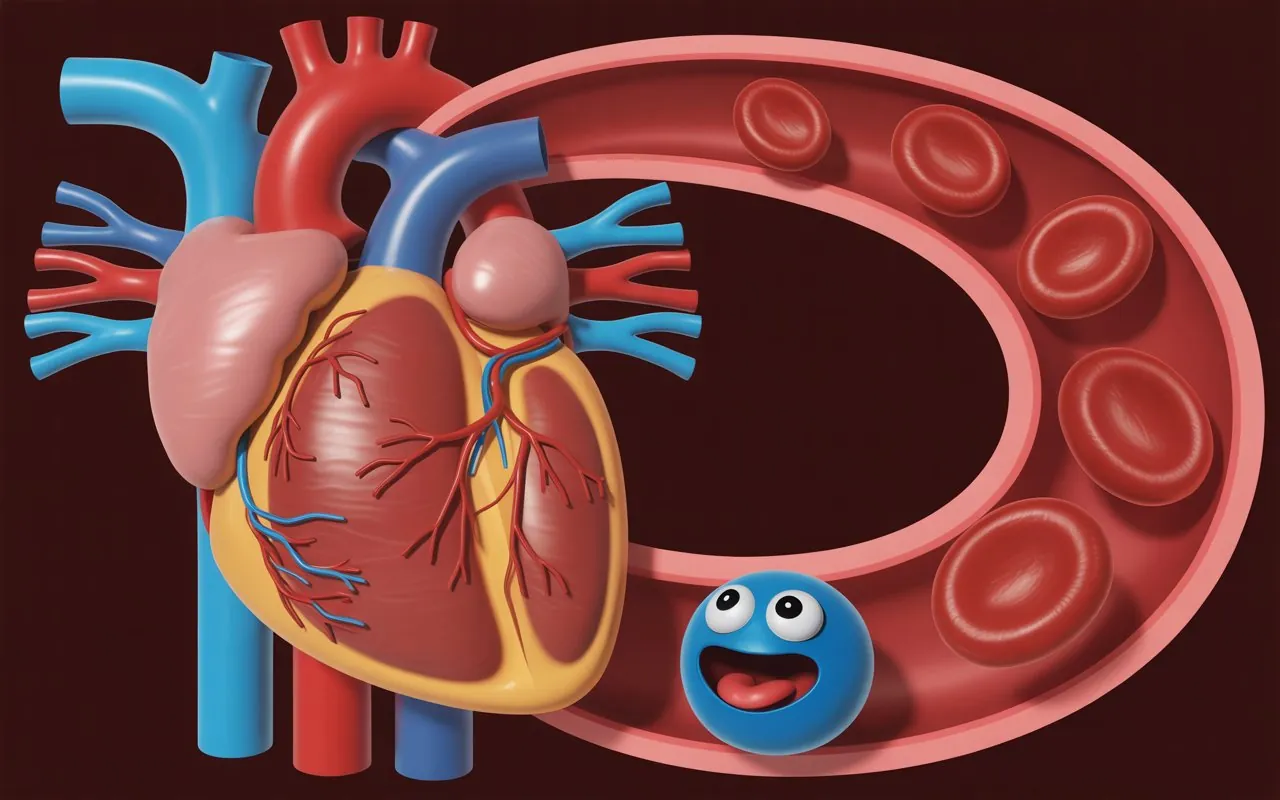
Final Thoughts: The Elegance of a Complex System
So, after our deep dive into the heart, lungs, and the vessels that connect them, we return to our original question: do veins carry oxygenated blood? The simple answer is yes, but only in very specific, critically important circumstances.
While the vast majority of veins in your body are dedicated to carrying deoxygenated blood back to the heart, the pulmonary veins perform the vital, opposite function, delivering fresh, oxygenated blood from the lungs. This exception isn’t a flaw in the system; it is the system’s elegant solution to the challenge of respiration. The definitions of “artery” and “vein” are based on the direction of blood flow relative to the heart, not on the oxygen content of the blood they carry. Understanding this distinction is the key to unlocking the true answer.
The next time you think about your circulatory system, you’ll know that the simple rules have profound exceptions, and you will have a complete and confident answer to the question, do veins carry oxygenated blood. The fact that you now know that do veins carry oxygenated blood in two key situations demonstrates a deeper appreciation for the complexity of the human body.